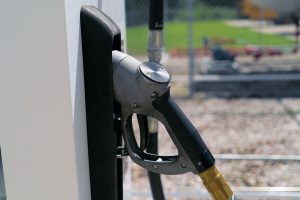Propane
In this section, you’ll find information, facts, and figures on everything from the history and distribution of propane to its safety and price. Find out just how easy it is to refuel a propane autogas vehicle along with the chemical properties that make up a propane molecule.
Autogas
 Propane autogas, the term for propane when fueling an on-road vehicle, has the attention of fleet and transportation managers for a few reasons: economics, energy security, and the environment.
Propane autogas, the term for propane when fueling an on-road vehicle, has the attention of fleet and transportation managers for a few reasons: economics, energy security, and the environment.
Refueling
 Refueling with propane autogas is easy, safe, and fast. Read more about how to refuel, where the closest refueling station is, and how to obtain your own fueling station.
Refueling with propane autogas is easy, safe, and fast. Read more about how to refuel, where the closest refueling station is, and how to obtain your own fueling station.
/content/propane-autogas-refueling
Emissions
 Packing a cleaner, greener approach to transportation, propane-autogas-powered vehicles significantly reduce nitrogen oxide, greenhouse gas, and carbon monoxide emissions than gasoline-powered vehicles.
Packing a cleaner, greener approach to transportation, propane-autogas-powered vehicles significantly reduce nitrogen oxide, greenhouse gas, and carbon monoxide emissions than gasoline-powered vehicles.
Safety
 In this section, you will learn about the industry’s commitment to a safe product, including the development of state-of-the-art fuel tanks, and the funding of research concerning the inherent qualities of propane autogas.
In this section, you will learn about the industry’s commitment to a safe product, including the development of state-of-the-art fuel tanks, and the funding of research concerning the inherent qualities of propane autogas.
Price
 Over the past 100 years, propane autogas has proven to be a cost-effective alternative fuel to lower operating costs through less expensive fuel and extended maintenance intervals.
Over the past 100 years, propane autogas has proven to be a cost-effective alternative fuel to lower operating costs through less expensive fuel and extended maintenance intervals.
Distribution
 During the 1970’s America imported approximately 35 percent of its oil supply. Today, about 60 percent of the oil consumed in the U.S. is imported, with 70 percent of that used by modes of transportation.
During the 1970’s America imported approximately 35 percent of its oil supply. Today, about 60 percent of the oil consumed in the U.S. is imported, with 70 percent of that used by modes of transportation.
History
 In 1910, Dr. Walter O. Snelling, a chemist and explosives expert for the U.S. Bureau of Mines, was contacted to investigate vapors coming from a gasoline tank vent of a newly purchased Ford Model T.
In 1910, Dr. Walter O. Snelling, a chemist and explosives expert for the U.S. Bureau of Mines, was contacted to investigate vapors coming from a gasoline tank vent of a newly purchased Ford Model T.
Off-Road
 In addition to on-road vehicles fueled by propane, many off-road engine applications are sold throughout the United States, including mowers, trimmers, leaf blowers and forklifts.
In addition to on-road vehicles fueled by propane, many off-road engine applications are sold throughout the United States, including mowers, trimmers, leaf blowers and forklifts.













